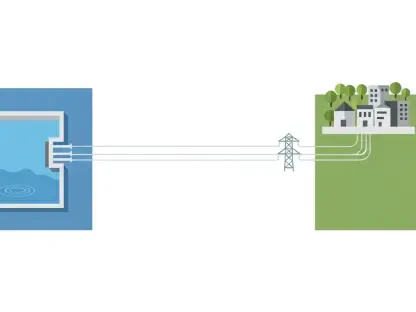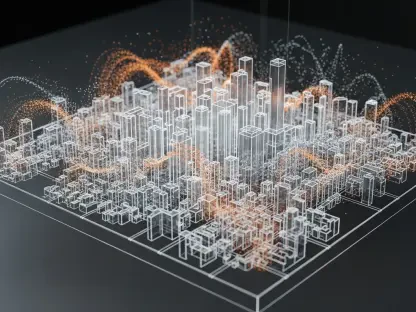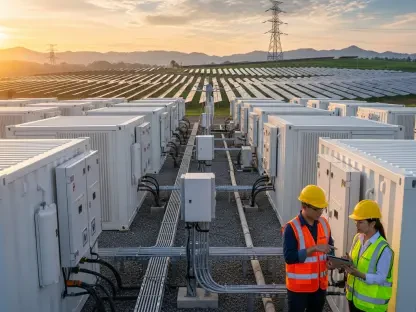Unplanned failures, grid instability, and the tough job of balancing resources during peak demand are challenging tasks. They push decision-makers toward better infrastructure, technology, and energy management.
Forward-thinking companies are rethinking how they use energy in buildings, factories, and transportation—and you’re invited to do the same.
Artificial intelligence (AI) offers a way forward. It helps companies tackle these challenges, allowing teams to concentrate on important tasks that improve their bottom line.
Is your business prepared to utilize AI and tap into its potential for success in the energy field?
ZAP Energy Challenges with AI
Predictive Maintenance
Predictive maintenance relies on AI to sift through sensor data. It tells us when equipment needs attention, helping avoid unexpected failures. This proactive approach means we can schedule maintenance, reducing downtime.
By using machine learning to spot subtle changes, operators can tackle issues before they grow. This shift from reactive to strategic maintenance saves money and keeps operations running smoothly.
AI-powered predictive maintenance can transform how your business manages key performance indicators (KPIs) related to health, safety, profitability, and sustainability.
AVEVA’s predictive analytics, grounded in quality data and industry expertise, offers more than early warnings; it forecasts failures and recommends efficient mitigation strategies.
Take PETRONAS, which saved $33 million by enhancing asset reliability, increasing utilization by 0.1% per plant, and achieving a 20x ROI through AI-driven insights.
Duke Energy also benefited, saving over $34 million with a no-code solution deployed quickly. Early anomaly detection minimizes downtime and supports sustainable operations.
Smart Grid Management
Smart grids transform energy management by allowing seamless information exchange between utility companies and consumers.
They leverage AI, cloud computing, and digital tools to enable devices within the grid to communicate effectively. This enhances control and promotes self-regulation, making the system responsive to real-time demands.
IoT sensors play a critical role in smart grid operations. They detect risks early and redistribute power to minimize outages, balancing loads without operator intervention. These sensors can also identify mechanical issues and perform basic troubleshooting, alerting technicians only when necessary, thus preventing larger problems.
Consider digitalizing your grid to strengthen resilience and reliability, and ensure faster operations. GE Vernova created GridBeats™—to help you address this challenge and maintain visibility across the grid, from broad regions to specific equipment, using accurate sensors and a dependable communications network.
Renewable Energy Optimization
AI leverages data with the precision of a seasoned engineer, predicting weather patterns and aligning energy generation with demand. It eliminates inefficiencies, ensuring wind turbines and solar panels operate at peak performance.
Underutilized renewable resources are no longer a missed opportunity but a critical asset. By analyzing historical data and forecasting conditions, AI optimizes energy production, making it not just reliable but essential.
This is the future of renewable energy—where technology and efficiency drive the industry forward, delivering real results to meet the demands of a modern world, and your innovative peers are already thriving in this area.
By modernizing their efforts, Craftworks enabled Austria’s leading electricity distributor and one of the largest producers of hydropower electricity in Europe to:
Gain significant time savings through process automation
Ensure a better use of water capacity and improve sustainability operations
Achieve higher profit margins with real-time, energy price-based smart network feeding
Carbon Emissions Concerns
However, energy usage concerns remain. This research estimates the carbon footprint of BLOOM, a 176-billion parameter language model, across its life cycle to be approximately 24.7 tonnes of CO2eq, considering only the dynamic power consumption. This number rises to 50.5 tonnes if you account for all processes, ranging from equipment manufacturing to energy-based operational consumption.
Energy Consumption Forecasting
AI eliminates waste with precision, ensuring that every resource is used where and when it’s needed.
Accurate predictions allow companies to streamline their supply chains, reducing inefficiencies and keeping operations running smoothly. It minimizes the risk of excess or shortages, giving companies the insight they need to plan effectively. AI’s ability to analyze historical data and predict future usage provides utilities with a clear path for resource allocation. It’s smart, efficient, and rooted in data-driven foresight.
When the world’s digital infrastructure company™, Equinix, sought optimal control for data center cooling systems—they leveraged the etaMIND AI suite to:
Save 900 MWh/year in electrical energy
And reduce 240 tCO2/year in emissions
Flattening Peak Demand
Energy is best used when demand is low, or renewables are plentiful. This creates a more resilient and sustainable system. Consumers are nudged to shift usage away from peak times, optimizing operations and ensuring energy is cleaner and smarter.
With AI-driven demand response, every watt is used with precision, adjusting in real-time to match supply conditions. This reduces strain on the grid, driving efficiency. Incentives for cutting back during high-demand periods ease congestion, making the entire system more reliable, efficient, and prepared for the future.
The AVEVA™ Unified Operations Center for Renewables delivers the capabilities needed for enhanced forecasting and analysis. The solution delivers a wide range of capabilities in solar and wind forecasting, revealing how well energy generation stacks up against demand and enables optimization and adjustment where needed.
Outsmarting Bad Actors
Energy theft hits where it hurts—security and revenue.
AI steps in with precision, using machine learning to monitor unusual patterns in real time. It spots anything out of line, flagging unauthorized usage before it gets out of hand.
Some malicious actors go as far as installing makeshift wiring or pipes, bypassing meters with things like hosepipes or bicycle inner tubes—reckless shortcuts that jeopardize safety. Unauthorized connections to an existing customer’s supply without their knowledge is another common tactic, putting unsuspecting individuals at risk.
The bottom line
AI isn’t just changing the energy game—it’s becoming the edge you need to stay ahead. It empowers you to forecast demand, spot fraud, and keep operations running smoothly.
The companies already using AI are cutting costs, boosting reliability, and seeing fewer breakdowns, with millions in savings to show for it.
From predictive maintenance to smart grid management, AI makes sure renewable energy runs at peak performance. It’s time to future-proof your operations and prepare for tomorrow’s energy landscape.









